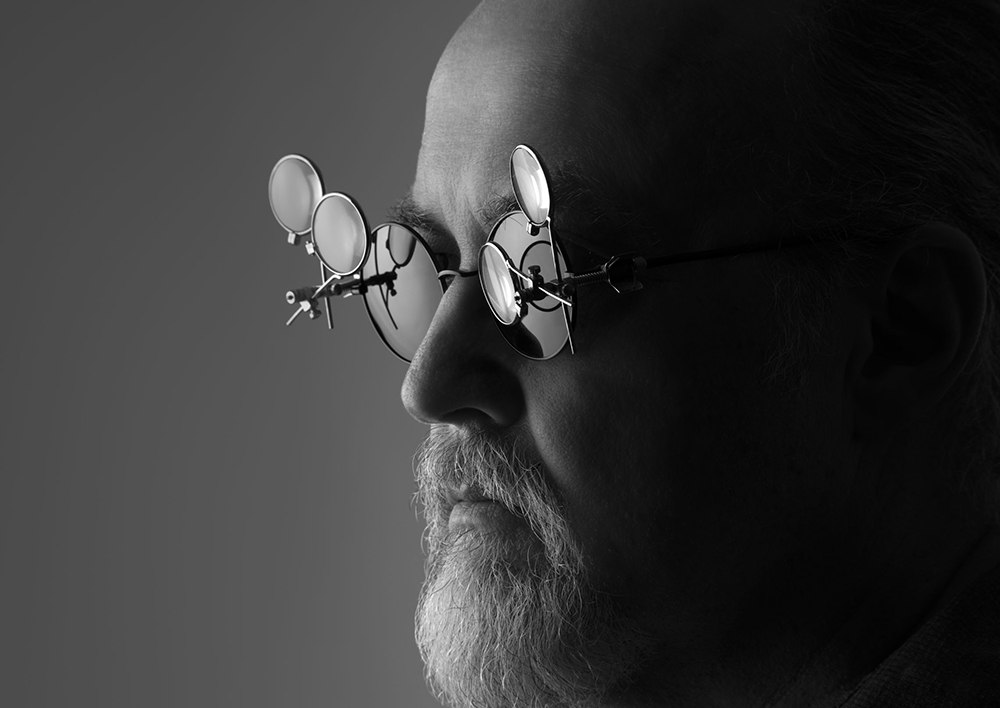
如果没有出现电力系统整合,世界会是什么样子?蒸汽朋克迷知道这一问题的答案。蒸汽朋克想象中的未来复古与时尚并存,未来经济将完全依靠蒸汽运行(包括飞行汽车甚至火车),这就好像维多利亚时代的蒸汽技术胜过电力一样。事实证明,大型投资银行之一的巴克莱银行(Barclays)倾向于运用一些蒸汽朋克式思维,至少在涉及市场的热门话题人工智能时是这样。
巴克莱银行的媒体和电信团队在其年度《噪音中的信号》(Signal in the Noise)汇编中提到了人工智能对艺术的潜在影响,还提到了好莱坞编剧因一些分歧而罢工的热门案例,尤其是在电影剧本写作中使用人工智能的问题上。除其他事项外,该汇编还讨论了好莱坞导演的初步协议,其中包括一项协议,即“人工智能不能取代人类成员履行相关职责。”
巴克莱银行表示,人工智能实际上可能是创意人员的福音,如果使用得当,可能会改变他们与企业之间的权力平衡范式。巴克莱银行还表示,人工智能对作家的威胁并不像人们想象的那么紧迫。看看蒸汽机这一案例就知道了。
考虑一下蒸汽朋克的情况
巴克莱银行写道:“技术倾向于从根本上将原有的工作流程重组为不同的形式,最终产生新能力。”换句话说,该银行预测人工智能将改变好莱坞的运作方式,从而会带来更多机会而不是减少机会。问题是,这不会一蹴而就。
将新技术完全整合到工作场所可能比新技术本身的出现要晚几十年,因为实施成本很高,而且大多数公司只是寻求快速提高生产率。该汇编以工厂适应电力发明为例。最初,工厂只是简单地用电动机取代了蒸汽机,而没有重新设计工厂布局,以实现蒸汽效率最大化。
这种偷懒式创新插件限制了效率提升(完全使用电力能够实现的),直到一代人之后,当企业完全围绕电力进行重新设计时,它们才获得了电力带来的全部好处。目前,在人工智能的起步阶段,企业正在将这项技术插入现有的工作流程中,但并没有围绕其重组整个商业模式。
与导演不同,那些罢工的编剧们在人工智能问题上没有达成一致,他们本质上是在倡导蒸汽朋克式未来,即当前的创意产业在未来几十年内都以同样的方式运作。巴克莱银行表示,这不是技术在现代经济中的运作方式。换句话说,不会有蒸汽朋克式的20世纪90年代风格的编剧室,永久地创作像《宋飞正传》(Seinfeld)和《老友记》(Friends)这样的作品。它看起来会有所不同。
对技术作用的根本性误解
导演工会达成了协议:“确认人工智能不是人类”,因此不能承担编剧的职责。正如英国《金融时报》Alphaville博客所指出的那样,巴克莱银行声称,该协议的框架“代表了对技术在内容创作中的作用的根本性误解”。
作家和人工智能之间的关系类似于画家和相机之间的关系(当时相机刚被发明出来)。相机作为一种没有独立视觉和艺术意图的设备,从来没有与画家竞争过。更重要的是,摄影并没有使绘画被淘汰。它只是孕育了一种全新的艺术形式,可以说可及性更高,也更民主。它在没有驱逐现有参与者的情况下扩大了艺术市场。现在说人工智能是否会遵循这一趋势还为时过早,但巴克莱银行乐观地认为,新技术将强化——并最终重新定义——创作过程,使创作者受益。
人们对人工智能在工作场所的普遍担忧是,它将使任务自动化,并消除对人类工作者的需求。巴克莱银行认为,就艺术而言,制片公司每天都能从外部作家那里收到大量可供利用的故事,这并不妨碍它们聘请更多有才华的作家,比如罢工的那些作家。
另一大担忧是,借助人工智能,任何人都能创作出以前需要投资教育和工具才能创作出来的作品。人工智能可能会使更多的人创作出更多的艺术作品,但内容激增并不一定意味着成熟的创作者的厄运。《噪音中的信号》这一汇编表明,数量的增加反而会产生更多的分销渠道,比如社交媒体和在线平台,来分享内容的爆炸式增长。今天失去工作的艺术家将在未来几年被更多的艺术家所取代,因为他们利用这种新工具进行创作。
巴克莱银行写道:“理论上,最优秀的内容创作者应该利用人工智能来变得更出色,更难以取代。卓越人才将变得更有价值,因为技术将使他们的作品得到进一步提升,就像华特·迪士尼(Walt Disney)或詹姆斯·卡梅隆(James Cameron)利用技术拓宽讲故事的画布一样。”
创意行业正处于十字路口。《噪音中的信号》敦促艺术家们关注历史,拥抱下一次工业革命。(财富中文网)
译者:中慧言-王芳
如果没有出现电力系统整合,世界会是什么样子?蒸汽朋克迷知道这一问题的答案。蒸汽朋克想象中的未来复古与时尚并存,未来经济将完全依靠蒸汽运行(包括飞行汽车甚至火车),这就好像维多利亚时代的蒸汽技术胜过电力一样。事实证明,大型投资银行之一的巴克莱银行(Barclays)倾向于运用一些蒸汽朋克式思维,至少在涉及市场的热门话题人工智能时是这样。
巴克莱银行的媒体和电信团队在其年度《噪音中的信号》(Signal in the Noise)汇编中提到了人工智能对艺术的潜在影响,还提到了好莱坞编剧因一些分歧而罢工的热门案例,尤其是在电影剧本写作中使用人工智能的问题上。除其他事项外,该汇编还讨论了好莱坞导演的初步协议,其中包括一项协议,即“人工智能不能取代人类成员履行相关职责。”
巴克莱银行表示,人工智能实际上可能是创意人员的福音,如果使用得当,可能会改变他们与企业之间的权力平衡范式。巴克莱银行还表示,人工智能对作家的威胁并不像人们想象的那么紧迫。看看蒸汽机这一案例就知道了。
考虑一下蒸汽朋克的情况
巴克莱银行写道:“技术倾向于从根本上将原有的工作流程重组为不同的形式,最终产生新能力。”换句话说,该银行预测人工智能将改变好莱坞的运作方式,从而会带来更多机会而不是减少机会。问题是,这不会一蹴而就。
将新技术完全整合到工作场所可能比新技术本身的出现要晚几十年,因为实施成本很高,而且大多数公司只是寻求快速提高生产率。该汇编以工厂适应电力发明为例。最初,工厂只是简单地用电动机取代了蒸汽机,而没有重新设计工厂布局,以实现蒸汽效率最大化。
这种偷懒式创新插件限制了效率提升(完全使用电力能够实现的),直到一代人之后,当企业完全围绕电力进行重新设计时,它们才获得了电力带来的全部好处。目前,在人工智能的起步阶段,企业正在将这项技术插入现有的工作流程中,但并没有围绕其重组整个商业模式。
与导演不同,那些罢工的编剧们在人工智能问题上没有达成一致,他们本质上是在倡导蒸汽朋克式未来,即当前的创意产业在未来几十年内都以同样的方式运作。巴克莱银行表示,这不是技术在现代经济中的运作方式。换句话说,不会有蒸汽朋克式的20世纪90年代风格的编剧室,永久地创作像《宋飞正传》(Seinfeld)和《老友记》(Friends)这样的作品。它看起来会有所不同。
对技术作用的根本性误解
导演工会达成了协议:“确认人工智能不是人类”,因此不能承担编剧的职责。正如英国《金融时报》Alphaville博客所指出的那样,巴克莱银行声称,该协议的框架“代表了对技术在内容创作中的作用的根本性误解”。
作家和人工智能之间的关系类似于画家和相机之间的关系(当时相机刚被发明出来)。相机作为一种没有独立视觉和艺术意图的设备,从来没有与画家竞争过。更重要的是,摄影并没有使绘画被淘汰。它只是孕育了一种全新的艺术形式,可以说可及性更高,也更民主。它在没有驱逐现有参与者的情况下扩大了艺术市场。现在说人工智能是否会遵循这一趋势还为时过早,但巴克莱银行乐观地认为,新技术将强化——并最终重新定义——创作过程,使创作者受益。
人们对人工智能在工作场所的普遍担忧是,它将使任务自动化,并消除对人类工作者的需求。巴克莱银行认为,就艺术而言,制片公司每天都能从外部作家那里收到大量可供利用的故事,这并不妨碍它们聘请更多有才华的作家,比如罢工的那些作家。
另一大担忧是,借助人工智能,任何人都能创作出以前需要投资教育和工具才能创作出来的作品。人工智能可能会使更多的人创作出更多的艺术作品,但内容激增并不一定意味着成熟的创作者的厄运。《噪音中的信号》这一汇编表明,数量的增加反而会产生更多的分销渠道,比如社交媒体和在线平台,来分享内容的爆炸式增长。今天失去工作的艺术家将在未来几年被更多的艺术家所取代,因为他们利用这种新工具进行创作。
巴克莱银行写道:“理论上,最优秀的内容创作者应该利用人工智能来变得更出色,更难以取代。卓越人才将变得更有价值,因为技术将使他们的作品得到进一步提升,就像华特·迪士尼(Walt Disney)或詹姆斯·卡梅隆(James Cameron)利用技术拓宽讲故事的画布一样。”
创意行业正处于十字路口。《噪音中的信号》敦促艺术家们关注历史,拥抱下一次工业革命。(财富中文网)
译者:中慧言-王芳
What would the world look like without the integration of electricity? Steampunk fans know. For anyone who’s not versed in one of the most popular science fiction genres outside of, say, Star Wars–style space opera or eerily relevant cyberpunk (and why wouldn’t you be?), steampunk imagines a retro-chic future where an economy of the future, including flying cars or even trains, would run completely on steam, as if the Victorian age technology prevailed over electricity. It turns out that one of the major investment banks, Barclays, is prone to some steampunk-style thinking, at least when it comes to the markets’ topic du jour: artificial intelligence.
For its annual Signal in the Noise compendium, assembled by the bank’s media and telecoms team, Barclays addresses A.I.’s potential impact on art and touches on the topical case of the Hollywood writers’ strike over several disagreements but especially the use of A.I. in screenwriting. It discusses, among other things, the tentative Hollywood directors’ deal that includes the agreement that “A.I. cannot replace the duties performed by members.”
A.I. may actually be a boon to creatives, and could tilt their power balance with corporations if used wisely, Barclays said, adding that the threat to writers is not as urgent as perceived. Just look at the steam engine.
Consider the steampunk
“Technology tends to fundamentally restructure pre-existing workflows into different forms, which ultimately results in new capabilities,” Barclays wrote. In other words, the bank predicts that A.I. will transform Hollywood’s operations, but in a way that expands, not eliminates, opportunity. The catch is, it won’t happen overnight.
The full integration of new tech into the workplace can lag decades behind its advent, because it is costly to implement and most companies are looking for just a quick productivity boost. The compendium uses the example of factories adjusting to the invention of electricity. Initially, factories simply replaced steam engines with electric motors without redoing the factory layout that was structured around maximizing steam efficiency.
This lazy innovation plug-in restricted the amount of efficiency that electricity could add, and it was only a generation later, when businesses completely redesigned around electric power, that they reaped its full benefits. Right now, in the infancy of A.I., companies are inserting the technology into existing workflows but not restructuring their whole business models around it. The writers who are on strike and, unlike the directors, don’t have an agreement on A.I., are essentially advocating for a steampunk-style future where the current creative industry works in the same fashion as it has been for the next several decades. That’s just not how technology works in the modern economy, Barclays says. In other words, there won’t be a steampunk alternative of 1990s-style writers’ rooms producing works like Seinfeld and Friends in perpetuity. It will look different.
‘Fundamental misinterpretation of the role of technology’
The directors union reached an “agreement confirming that A.I. is not a person,” and therefore cannot assume writers’ duties. As noted by the FT‘s Alphaville blog, Barclays claims that the framing of the agreement “represents a fundamental misinterpretation of the role of technology in content creation.”
The relationship between a writer and A.I. is akin to that of a painter and a camera, when the tool was first invented. The camera, being a device without independent vision and artistic intent, was never in competition with a painter. What’s more, photography did not make painting obsolete. It simply birthed an entirely new art form that is arguably more accessible and democratic. It expanded the art market without expelling existing players. It’s too early to say whether A.I. will follow this trend, but Barclays is optimistic that the new tech will enhance—and eventually redefine—the creative process to the benefit of creatives.
A common fear about A.I. in the workplace is that it will automate tasks and eliminate the need for human workers. In the context of art, Barclays argues that production companies already receive a deluge of serviceable stories from outside writers every day, which doesn’t stop their commissioning of more talented writers like the ones on strike.
Another fear is that with A.I., anyone will be able to produce work that previously required an investment in education and tools to create. A.I. will make it possible for more people to produce more art—but a proliferation of content doesn’t have to spell doom for established creatives. Signal in the Noise suggests that the increased volume will instead result in the creation of more distribution channels to share the explosion of content, such as social media and online platforms. The artists put out of work today will be replaced by many more in years to come, enabled by exploitation of this new tool.
“A.I. should in theory be used by the best content creators to become even better and tougher to replace,” Barclays wrote. “The best talent will become even more valuable as technology will enable further enhancement of their work the same way Walt Disney or James Cameron incorporate technology to widen the canvas for storytelling.”
The creative sector is at a crossroads, with the option to eschew A.I. and proceed into a steampunk-esque future largely trapped in the past. Signal in the Noise urges artists to take note of history and embrace the next industrial revolution.






